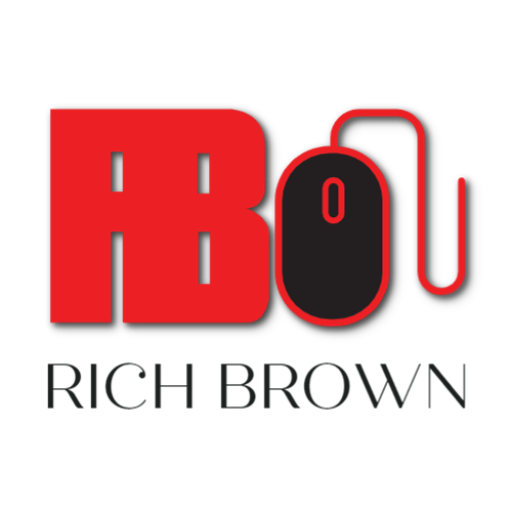Build High-Quality Datasets for AI Training

In the world of natural language processing (NLP), data is king. High-quality datasets fuel the training of AI models, enabling them to understand and generate human-like text.
But obtaining the right kind of data is often a challenge.
When I first attempted to build an NLP chatbot, I underestimated the challenge of gathering clean and structured text data.
I quickly realized that finding clean and relevant data was harder than I expected. This challenge led me to explore web scraping.
I used it as a way to gather structured text data efficiently.
I thought getting data would be easy—I’d just grab text from a few websites, clean it up, and be done.
But I quickly realized that data quality and structure mattered immensely. The raw text was messy, inconsistent, and full of irrelevant content.
That experience taught me the importance of smart web scraping and rigorous data preprocessing.
One of the most effective ways to build a dataset for NLP is through web scraping.
In this article, we’ll explore how to scrape text data, best practices for quality assurance, ethical considerations, and tools that can simplify the process.
Why Web Scraping for NLP?
Web scraping is a method of extracting data from websites and online sources.
Think of it like panning for gold—there’s a vast river of text flowing online, but you need to filter out the noise, such as HTML tags, irrelevant text, and formatting issues, to find the valuable nuggets of data.
It’s particularly useful for NLP because:
- Abundance of Text: The internet is a vast repository of text data, covering diverse topics, writing styles, and languages.
- Customization: Scraping allows you to collect exactly the kind of data you need for specific NLP tasks, such as sentiment analysis, machine translation, or chatbot training.
- Scalability: Automated web scraping tools can gather large amounts of data quickly, making it an efficient solution compared to manual collection.
Identifying High-Quality Sources
Before scraping, it’s essential to identify reliable and high-quality data sources. Some commonly used sources include:
- News Websites: High-quality journalism sites like BBC, The New York Times, and Reuters provide structured and well-written content.
- Academic Repositories: Sites like arXiv, Google Scholar, or Semantic Scholar host research papers and abstracts useful for technical NLP models.
- Forums & Social Media: Platforms like Reddit, Twitter, and Stack Overflow provide conversational text data, but require filtering for quality and relevance.
- Public Datasets: Open-source platforms such as Kaggle, Common Crawl, and Wikipedia offer vast text corpora suitable for NLP tasks.
Choosing the Right Scraping Tools
Several tools make web scraping easier and more efficient, each suited for different use cases.
For example, BeautifulSoup is great for beginners extracting simple text from static pages, while Scrapy is better for large-scale scraping projects.
Selenium is ideal for scraping dynamic content that requires user interaction, and Apify or Octoparse provide no-code options for those without programming experience.
Tools:
- BeautifulSoup: A Python library ideal for parsing HTML and extracting text from web pages.
- Scrapy: A more advanced Python framework designed for large-scale web crawling and data extraction.
- Selenium: A tool for automating web interactions, useful for scraping dynamic websites that require user interaction.
- Apify & Octoparse: No-code or low-code platforms that simplify the scraping process without requiring extensive programming knowledge.
Web Scraping Process for NLP
1. Define Your Goals
Before scraping, outline your objectives:
- What type of text data do you need?
- What structure should the data follow?
- How much data do you require?
2. Respect Legal and Ethical Guidelines
Web scraping must comply with ethical and legal standards. Here’s how:
- Check Robots.txt: Many websites have a
robots.txtfile that specifies which pages can be scraped. - Follow Copyright Laws: Ensure you have permission to use the data or that it falls under fair use.
- Avoid Overloading Servers: Implement delays between requests to prevent crashing the website.
3. Extract and Clean Data
Once the data is collected, it needs to be cleaned and structured:
- Remove HTML Tags: Use BeautifulSoup or regex to extract clean text.
- Normalize Text: Convert text to lowercase, remove punctuation, and standardize formatting.
- Handle Noise: Filter out irrelevant content like ads, headers, and footers.
- Detect and Remove Duplicates: Ensure your dataset is diverse and free from redundancy.
4. Store and Format Data
NLP models require structured data storage formats like:
- CSV or JSON: Common formats for text datasets.
- Database Storage: Use PostgreSQL or MongoDB for large-scale data storage.
- Preprocessing Pipelines: Use libraries like SpaCy or NLTK for tokenization, lemmatization, and text vectorization.
Challenges in Scraping Text Data
While scraping is powerful, it comes with challenges:
- Anti-Scraping Measures: Many websites have CAPTCHAs, dynamic content loading, or IP blocking to prevent scraping.
- Data Quality Issues: Raw scraped data often contains noise, requiring extensive cleaning.
- Legal Risks: Some content is protected by copyright, necessitating careful compliance with fair use policies.
Alternative Data Collection Methods
If web scraping is not an option, consider these alternatives:
- APIs: Many websites provide APIs (e.g., Twitter API, Reddit API) that offer structured data access.
- Crowdsourcing: Platforms like Amazon Mechanical Turk can generate datasets from human contributors.
- Public Datasets: Leverage existing NLP datasets from sources like the Common Crawl, OpenAI’s WebText, or Google’s NLU datasets.
Conclusion
Scraping text data is a powerful method for building high-quality NLP datasets.
The best way to truly understand its potential is to try it yourself. Start with a small project—perhaps extracting news articles or social media posts using one of the tools mentioned above.
Experiment with different techniques, refine your cleaning process, and explore how structured data can enhance your NLP models.
It requires careful planning, ethical considerations, and technical expertise.
By selecting the right tools, cleaning data effectively, and complying with legal standards, you can create robust datasets to train your AI models.
Whether you’re developing chatbots, sentiment analysis models, or text summarization tools, high-quality scraped text can be the foundation of your success.
Try It Yourself! Pick a website and experiment with web scraping using BeautifulSoup or Scrapy—start small and scale up as you learn.

Leave a Reply
You must be logged in to post a comment.